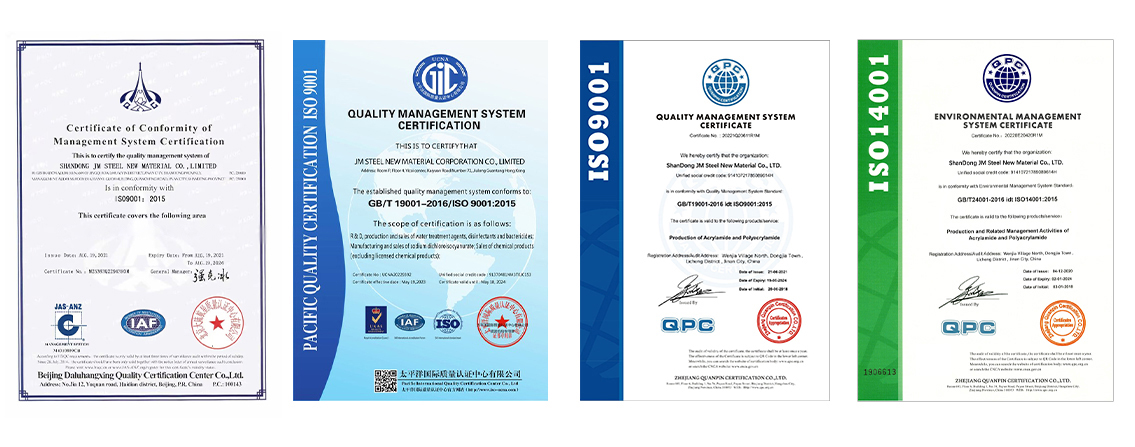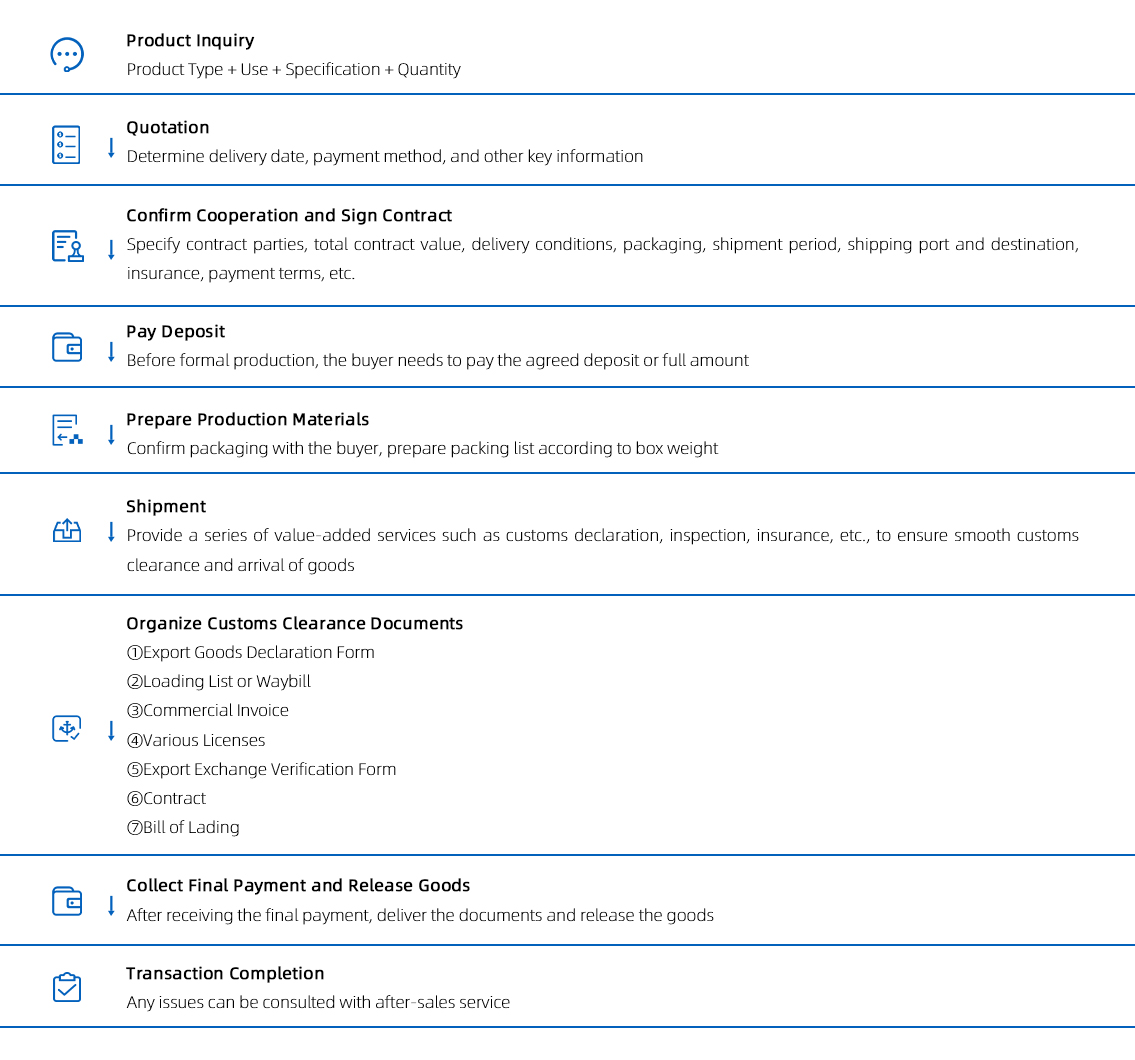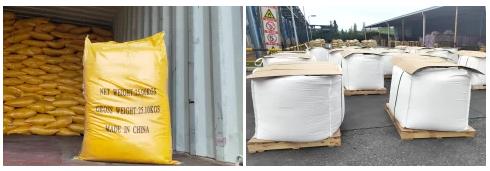Polyacrylamide (PAM) is the collective name of acrylamide homopolymer or polymer copolymerized with other monomers . Polyacrylamide (PAM) is one of the most widely used varieties of water-soluble polymers .
Polyacrylamide (PAM) is widely used in petroleum exploration, papermaking, water treatment, textile, medicine, agriculture and other industries. According to statistics, 27% of the global Polyacrylamide (PAM) production is used in the petroleum industry
Email address:info@jinmaicn.com Telephone:+86-531-68961020
Purity:99.99%
Type:Anionic PAM / Cationic PAM / Non-ionic PAM / Amphoteric PAM
Polyacrylamide (PAM) is the collective name of acrylamide homopolymer or polymer copolymerized with other monomers . Polyacrylamide (PAM) is one of the most widely used varieties of water-soluble polymers . Polyacrylamide (PAM) is widely used in petroleum exploration, papermaking, water treatment, textile, medicine, agriculture and other industries. According to statistics, 27% of the global Polyacrylamide (PAM) production is used in the petroleum industry
| Anionic polyacrylamide | ||
| Test items | Specified technical indicators | Results of testing |
| Exterior | Solid granular | Solid granular |
| Molecular weight (ten thousand) ≥ | 12 million | 12.3 million |
| Solid content (%) ≥ | 90 | 92 |
| Dissolution time (m) ≤ | 60 | 55 |
| Water insoluble matter () ≤ | 0.3 | 0.25 |
| Sulfate content /% | ≤0.5 | ≤0.5 |
| Sulfate content /% | ≤1.0 | ≤0.8 |
| Cationic polyacrylamide | ||
| Test items | Specified technical indicators | Results of testing |
| Exterior | White granular | White granular |
| Ion degree ω / (%) | 60 | 60 |
| Solid content ω1 / (%) | ≥88 | ≥92 |
| Dissolution time (1g / L), t / min | ≤60 | ≤55 |
| Dissolution time(1g/L),t/min | ≤0.3 | ≤0.25 |
| Water insoluble matter ω2 /% | ≤0.05 | ≤0.048 |
| Sulfate content ω4 / (g / g) | ≤0.05 | ≤0.048 |
| Nonionic polyacrylamide | ||
| Test items | Specified technical indicators | Results of testing |
| Exterior | Solid powder | Solid powder |
| Molecular weight(ten thousand) | 12 million | 12.2 million |
| Solid content (%) | ≥90 | ≥91 |
| Dissolution time (m) | ≤60 | ≤42 |
| Water insoluble matter(%) | ≤1 | ≤0.5 |
| Chloride content /% | ≤0.5 | ≤0.5 |
| Sulfate content /% | ≤1.0 | ≤0.8 |
In petrochemistry, polyacrylamide (PAM), as a multifunctional additive, plays an important role in drilling fluid, well washing fluid, water injection and enhanced oil recovery.
(1) Drilling: as a regulator of drilling fluid, its role is to adjust the rheology of drilling fluid, carry cuttings, lubrize drill bits, reduce fluid loss, etc. The drilling fluid modulated with PAM has low specific gravity, which can reduce the pressure and blockage on the oil and gas reservoir, and is easy to find the oil and gas reservoir, which is conducive to drilling. The drilling speed is 19% higher than that of conventional drilling fluid, and the drilling rate is about 45% higher than that of mechanical drilling. In addition, it can greatly reduce stuck drilling accidents, reduce equipment wear, and prevent leakage and collapse.
(2) Fracturing: Fracturing process is an important stimulation measure for the development of tight formations in oil fields. Methylene polyacrylamide crosslinked fracturing fluid is widely used because of high viscosity, low friction, good suspended sand capacity, little filtration, good viscosity stability, less residue, wide supply, convenient configuration and low cost.
(3) Tertiary oil displacement: PAM’s properties of thickening, flocculation and rheological regulation of fluids make it play an important role in oil extraction. It is widely used in drilling, water plugging, acidizing water, fracturing, well washing, well completion, drag reduction, anti-scale and oil displacement. In general, the purpose of using PAM is to improve the recovery rate of oil.



(1) Ensuring Safety:
The packaging materials we choose that can withstand various physical and chemical challenges encountered during long-distance transportation, including drops, pressure, and changes in temperature and humidity. For hazardous chemicals that are flammable, explosive, toxic, or corrosive, special safety packaging will be used to ensure compliance with the United Nations “Recommendations on the Transport of Dangerous Goods: Model Regulations” (also known as the UN regulations).
(2) Leakage Protection:
Our packaging will include enhanced measures to prevent leakage, especially for liquids or chemicals that can produce harmful vapors. This will be achieved through the use of double-layer packaging or special sealing techniques to provide additional safety assurance.
(3) Clear Label Information:
We will ensure that correct labeling information is clearly marked on the packaging, including product name, hazardous material identification, batch number, manufacturer information, etc. Hazardous materials will be labeled with the appropriate hazard labels and UN numbers in accordance with international regulations such as the IMDG Code (International Maritime Dangerous Goods Code) or ICAO TI (International Civil Aviation Organization Technical Instructions).
(4)Environmental Protection Factors:
Our packaging will take environmental impact into consideration. We will use recyclable or biodegradable materials as much as possible, avoid excessive packaging, reduce waste and costs, and adhere to the principles of sustainable development.
(1) We will ensure the transportation vehicles and related equipment are in perfect condition and meet all safety standards and regulatory requirements.
(2) We will ensure that the speed, route, and driving safety during transportation comply with traffic regulations and customer requirements, avoiding illegal and dangerous driving.
(3) We will ensure that the storage, loading, unloading, cleaning, maintenance, and repair of chemicals during transportation comply with safety regulations and requirements, maximizing the safety and stability of the chemicals.
(4) We will ensure that professional and skilled staff coordinate, operate, and manage the delivery and distribution processes, with effective emergency response and handling measures in place.
(5) We will monitor and track the entire transportation process through tracking records, video surveillance, and ensure timely response and handling of related incidents.
(6) We will adhere to relevant laws and regulations, strictly managing and controlling the transportation of chemicals to ensure their safety.
(1) We will provide timely transportation and delivery according to customer needs, ensuring prompt fulfillment of customer delivery requirements.
(2) We will adhere to transportation schedules, achieving precise delivery, improving delivery efficiency, and offering comprehensive delivery services.
(3) We will establish a complete customer service system, equipped with a professional chemical management team, to ensure delivery times and promptly deal with customer complaints, inquiries, and other issues.